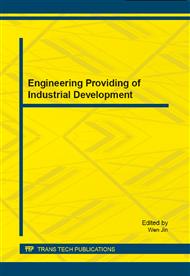p.263
p.267
p.273
p.279
p.283
p.291
p.295
p.302
p.310
The E-Derivative and Completeness on Circuit Error-Detection System of Differential Equations
Abstract:
Through discuss the relations of e-derivative, derivative and logical functions, we propose e-derivative differential equations detective method of circuit error. We gives the theorems and proved theoretically that circuit error-detection system, which combines with e-derivative differential equations detective method and derivative differential equations detective method is having completeness, this system is able to detect all the circuit error. At the same time, we explain that the corresponding principles of the circuit error-detection system, and reveals the relationship between the circuit error and the function data (value). Finally, we give detection examples for all possible detected cases. For the present error-detection system only with derivative differential equations detective method, the circuit error-detection system which we proposed make up the deficiency and defect of the original system, which can not be detected for many circuit error and is do not know the reasons. We construct a complete circuit error-detection system.
Info:
Periodical:
Pages:
283-288
Citation:
Online since:
September 2014
Authors:
Price:
Сopyright:
© 2014 Trans Tech Publications Ltd. All Rights Reserved
Share:
Citation:


